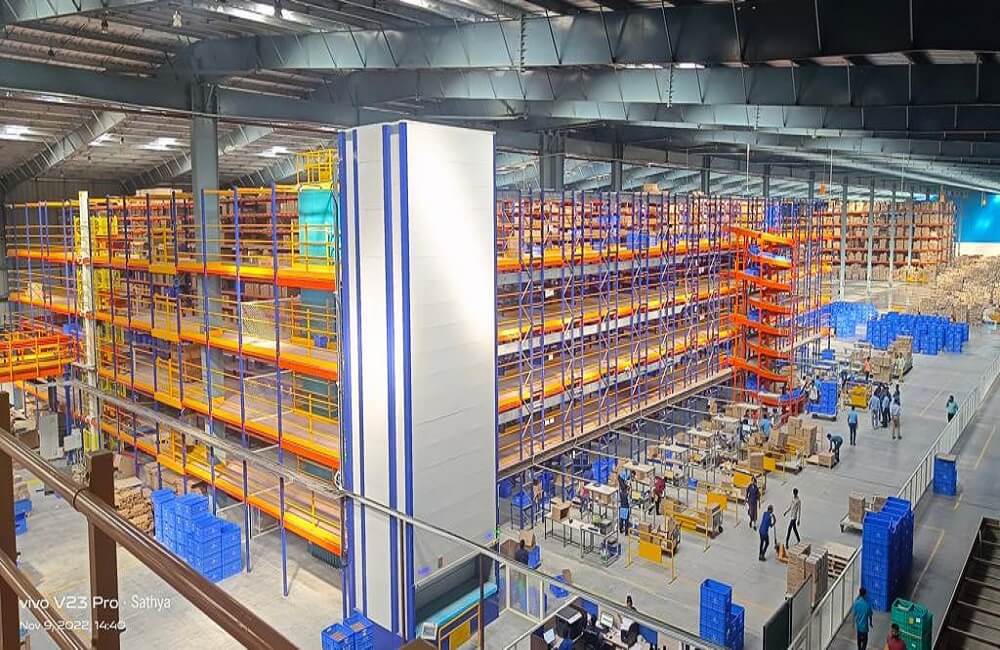We delve into the key trends in the semiconductor supply chain as a majority of organizations in the world undergo a digital transformation
A technological utopia is no longer merely the staple of science fiction. We have come to live in a world where the singularity is now real. AI and technology-powered advances are changing life, industry, and commerce as we know it.
It is no secret that semiconductors are driving the growth of many industries today owing to the increasing technological convergence. The pandemic and increased technological adoption have led to a ripple effect across industries: Many are under significant distress as semiconductor foundries or fabs are unable to meet the exponential increase in demand for semiconductor chips.
![]()
Source: Gartner
According to a Goldman Sachs report, the worldwide chip supply shortfall has impacted at least 169 sectors. With no solution in sight until at least 2022, all governments across the world face a major challenge. It has already begun to have an effect on major economies across the world.
Based on insights from TechMonitor, let’s understand the underlying affecting the demand and supply of semiconductors going ahead.
Cause and effect
Sales in May 2021 were 26% higher than the same month in the previous year, according to the Semiconductor Industry Association, The demand deficit exists because semiconductor manufacturers did not expect such a sporadic increase in demand and are struggling to fulfil need-gaps.
While manufacturers are trying to keep up, the pandemic has also exposed the fault lines in the global chip supply chain, with the great majority of manufacturing being done by two companies: TSMC in Taiwan and Samsung in South Korea. When it comes to cutting-edge semiconductors for mobile devices or military applications, these foundries are particularly prominent.
Aside from the pandemic, other causes contributing to the scarcity include a 50-year-long drought in Taiwan, which has left TSMC and other chipmakers unable to obtain sufficient amounts of water, which is essential in chip production. Fires at industries, power shortages, and a shipping blockade at the Suez Canal have all hampered supplies. The confluence of these factors and the fact that the demand for semiconductors today is unprecedented has led to the semiconductor shortage that we see today.
Assessing impact
Semiconductors have become the pumping heart of billions of goods, literally, including mobile phones, data centers, computers, laptops, tablets, smart devices, cars, home appliances, life-saving medicinal devices, Agri-Tech, ATMs, and more, thanks to the technological advancements in various industries.
As the worldwide demand for semiconductor chips continues to outpace supply, several sectors have been impacted. Vehicle manufacturers have been impacted the hardest by the chip scarcity throughout the world, with Volkswagen, Ford, Renault, Nissan, and Jaguar Land Rover among the worst-affected. Due to a scarcity of chips, which are utilized in numerous automobile components such as digital speedometers, infotainment systems, computerized engine management, and driver assistance systems, all of these firms are expected to lose billions. The majority of firms have stated that the car supply interruption may persist until at least 2022.
The shortfall has impacted a wide range of industries, delayed the delivery of popular electrical goods and limiting the supply of TVs and other OLED displays. The automobile sector has been particularly badly affected, with manufacturing lines throughout the world being forced to shut down for weeks at a time owing to a shortage of parts. The need of the hour to ramp up the semiconductor supply is to build more facilities in more countries. However, this is a challenging endeavor owing to the complexity and capital-intensive nature of semiconductor foundries.
Are more facilities being built?
To address the elephant in the room, about 75% of semiconductor production capacity, as well as several critical material suppliers—silicon wafers, photoresist, and other specialized chemicals—are located in China and East Asia, an area that is very vulnerable to earthquakes and geopolitical conflicts. To mitigate the risk of major global supply disruptions, governments should implement market-driven incentive programmes to achieve a more diverse geographical footprint, which should include expanding manufacturing capacity in the United States as well as expanding production sites and sources of supply for some critical materials
According to SEMI, a global industry association representing companies in the electronics design and manufacturing supply chain, semiconductor firms will start the construction on 19 new high-volume fabs by the end of this year and another 10 in 2022. China and Taiwan will get eight each of the 29 fabs, followed by the Americas with six and Europe/Middle East with three. South Korea and Japan will begin building on two fabs a piece as well.
Intel is reportedly investing $20 billion in the construction of two new semiconductor factories in Arizona. Whereas in the Indian context, the Tata group is looking to make a foray into contemporary semiconductor manufacturing. The wide geographical spread of these facilities indicates that the world is moving away from a single source supply chain. While the bulk of semiconductor manufacturing happens in China or Taiwan today; the power centers for semiconductor manufacturing too are expected to change with time.
In order to be competitive over the next 10 years, the semiconductor manufacturing sector will need to invest nearly $3 trillion in R&D and capital investment across the value chain to keep up with the growing demand for semiconductors. Governments and industry participants must work together. The emphasis for the semiconductor manufacturing industry would be on collaborations to keep allowing global access with respect to markets, technology, finance, and talent and increasing the supply chain’s resiliency.
– By Lionel Alva



